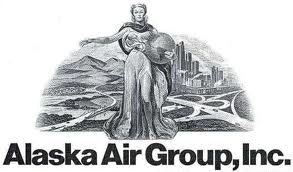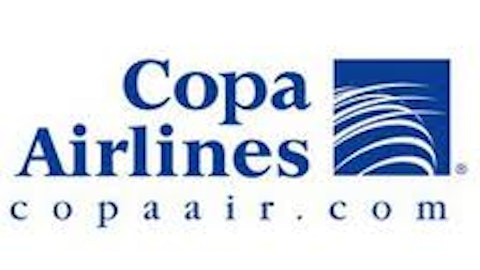After the airline industry was critically wounded in 2007, it is on the pathway to recovery. In fact, recently most airlines have outperformed the S&P 500. In this article I will review three carriers within this industry that could offer attractive investment prospects.
A regional carrier that is growing fast
Alaska Air Group, Inc. (NYSE:ALK) is the sixth largest carrier in the U.S., and it may offer the best potential for capital appreciation. The company should benefit from declining jet fuel prices and the deceleration of Virgin America’s expansion in the Northwest. Also, the company received the highest customer satisfaction rating from J.D. Power. This tradition has been rolling for the past five years, and there is a correlation between customer satisfaction as revenues, client loyalty, and ultimately stock prices.
The company still trades relatively cheaply at 13.06 times earnings. The industry average price-to-earnings ratio is 32.7, so Alaska Air Group, Inc. (NYSE:ALK) trades well below average. Its forward P/E of 8.92 makes the investment even more attractive. Its debt-to-equity ratio at 0.6 is also low compared to the industry average of 2.0.
According to its most recent quarterly earnings report, the carrier’s revenue increased 9% to $1.13 billion on a year-over-year basis. Its return on invested capital rose to 13.4% compared to 11.6% in the twelve months ended March 31, 2012.
Alaska Air Group, Inc. (NYSE:ALK) also brings capital appreciation through its share repurchase programs. Since 2007, the airline has repurchased $340 million worth of shares. Furthermore, the free cash flow in the first quarter of 2013 rose 28% to $109 million. Its solid balance sheet should allow for the company to continue its share repurchase programs in the future and expand operations.
Finally, the analysts have a 4.3 score on Alaska Air Group, Inc. (NYSE:ALK), where 5.0 corresponds to buy, 3.0 to hold, and 1.0 to sell, respectively.
Major carrier offers an interesting investment prospectus
US Airways Group, Inc. (NYSE:LCC) is a major carrier that had an outstanding performance in the first quarter of 2013. The merger with AMR, the parent company of American Airlines, positions US Airways Group, Inc. (NYSE:LCC) to increase its international exposure. The company would make it the biggest domestic carrier.
The company trades with a P/E of 5.54, and a forward P/E of 5.90, which means that the company is trading way below the industry’s P/E average. Also, its price-to-book ratio is 1.7, while the industry’s is 2.6. Its revenues increased 4% to $3.41 billion, and it resulted in a net income increase of 43% to $69 million, or $0.26 per share.
US Airways Group, Inc. (NYSE:LCC) is expected to increase its market share overseas, boosting revenue due to higher margins that international flights offer to the company. Further, its consolidated traffic increased by 4.4% in April compared to last year. The company is expanding its fleet, and there is no doubt that its revenues should increase.
The Wall street recommendation is 4.3 on a 5-point scale.
The monster of Atlanta expands
Delta Air Lines, Inc. (NYSE:DAL) is posed for huge gains in the future. The carrier recently inaugurated a $1.4 billion terminal at JFK International Airport. This action only shows signs of growth, and investors’ mind should be at ease. Also, the company has opened routes from Seattle to Tokyo-Haneda and from Newark to Paris.
The company is the most expensive in terms of valuation compared to Alaska Air Group, Inc. (NYSE:ALK) and US Airways Group, Inc. (NYSE:LCC). The company trades with a P/E of 17.15, but it is still below the industry average. What’s more is that its forward P/E is 5.98, so the investment looks attractive.
The airline announced the instatement of a dividend and a share repurchase program that will bring capital appreciation. The dividend should be safe in the interim. The company increased its cash from operations to $1.0 billion for the three months ending in March 31, 2013, from $831 million a year earlier. I have no doubt that the company will be able to sustain its dividend payment in the long run.




